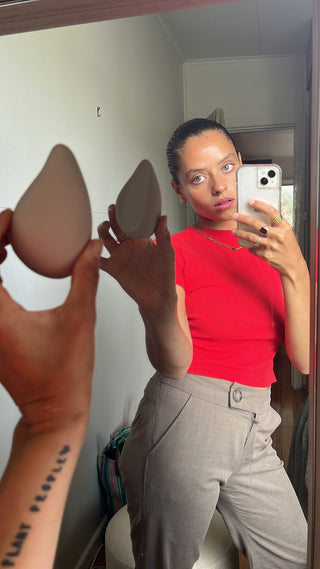There are many healthy reasons couples choose to change the rules around monogamy in their relationship. Open relationships are not always 'pit stops to breakupsville', as many people believe. It could be a matter of wanting to explore sexuality or try something new. For some, the idea of seeing people outside their partnership while having their partner do the same is thrilling. Whatever the reason, an open relationship can be an exciting and fulfilling alternative to monogamy that can enhance your connection rather than erode it.
An open relationship is more of an umbrella term for couples that don’t follow traditional standards of monogamy. There are several different kinds of open relationships, and it’s important to know which one you want before suggesting it to your partner. Clear communication about what you’re both comfortable with is essential.
Swinging is a casual and fun introduction to consensual non-monogamy. You know those ‘keys in the bowl’ parties? That’s swinging. It typically involves committed couples ‘exchanging’ partners for the night. However, it can also involve couples attending sex clubs and sex parties together. Swinging is primarily a couples activity, making it a good way to explore the world of open relationships as a team.
‘Monogamish’ is a term that’s gaining popularity. In ‘monogamish’ relationships, the primary relationship remains the priority, and the relationship is mostly monogamous, but there’s some room for sexual exploration outside the couple. This arrangement is typically defined by rules or boundaries set by the couple in advance. For example, only one-night stands may be allowed, or perhaps only kissing, or it could be determined by location or time period. Whatever rules you decide on, the key is to agree (and stick) to them before acting upon them.
Polyamory refers to having multiple relationships of equal (or similar) levels of commitment simultaneously. Polyamory typically extends beyond just sex and is defined by romantic attachment. It could mean dating two people (or more) at once who don’t know each other, or it could involve all parties dating each other.
Relationship anarchy isn’t defined by specific rules but is more of a theoretical perspective on relationships. It rejects the couple format and the cultural hierarchy of lovers over friends, focusing more on an abundance of love and connection.
Suggesting an open relationship to your partner is delicate, and should be treated as such. A common reaction to the suggestion of an open relationship is for your partner to interpret it as a sign of their own inadequacy. Difficult conversations are always best handled with clear and direct communication, which is why understanding your ideal relationship configuration is key.
It’s also important to understand why you want to open up your relationship. Before you sit down with your partner, you need to know yourself so you can communicate it in a way that won’t hurt them unnecessarily. Is it because you want to explore your sexuality? Do you want to try BDSM while your partner doesn’t? Perhaps your partner travels a lot or lives long distance and your sexual needs are unmet? Maybe monogamy simply doesn’t work for you or feels too constraining. Take time to reflect on why you want to make this change to your relationship. Try to eliminate the possibility that you want to open up your relationship to avoid problems you might be facing within it. If done for the wrong reasons, an open relationship will not work. It requires trust, communication, and love to thrive.
When you’re ready to bring it up with your partner, start by discussing what dedication means to you. Present the open relationship as something that doesn’t conflict with your current relationship. Be direct about what you want, such as, “I think I’m bisexual and I want to try sleeping with women,” while reassuring them that “this is something I want to do for me to help me understand my identity, and it does not in any way diminish the love I feel for you.”
If your partner is open to continuing the conversation, it’s time to discuss the details. What boundaries do you both need for this to work? Be specific and make a clear plan. How much time will you devote to finding and seeing new sexual partners? Will you be on dating apps, or will it be more situational? Can you go on dates, or is it solely for hook-ups? Who is off-limits? And most importantly, how much are you going to share with each other? It’s okay if your perspectives differ; you might find security in hearing about their experiences while they may prefer not to hear about yours. The rules can be tailored to each of you, as long as you know and respect what the other needs.
Finally, understand that this might be an evolving process for both of you. You might agree that dates with others are okay and then reevaluate once you’ve tried it. Decide at the beginning how often you’re going to check in about this. Make a plan to talk about it again every month, every six months, or whatever works for you. Accept that things might need to be a bit malleable in the beginning while you both feel your way through it. Open relationships can be a lot of fun, but like everything else in relationships, consent and communication need to be at the forefront.












